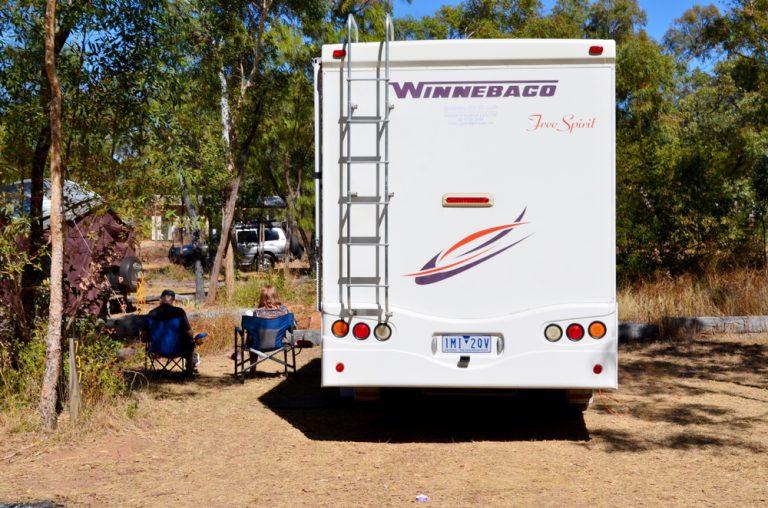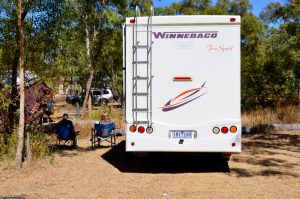
 When you’re in the thick of the excitement of planning an RV trip, thinking about RV accidents may be the very last thing on your mind — or at least, the last thing you want to be there.
When you’re in the thick of the excitement of planning an RV trip, thinking about RV accidents may be the very last thing on your mind — or at least, the last thing you want to be there.
But for even the carefullest drivers, things do happen, and it’s important to be prepared ahead of time. By learning about the most common types of RV road accidents and safety hazards, you stand a good chance of avoiding them… and in the case of unavoidable mishaps, knowing your options for finding roadside assistance and trustworthy repairs can go a long way from turning a catastrophe into a minor hiccup.
In this post, we’ll go over some of the most common types of RV road accidents as well as basic RV pet safety and more. We’ll also talk about what you need to know ahead of time when it comes to insurance coverage and roadside assistance, particularly if you’re driving an RVshare rental.
Ready to dive — and drive — in? Let’s go!
Common RV Road Accidents
Although there’s a bit of a learning curve to driving such a large vehicle, in many important ways, driving an RV is just like driving a regular car or truck. Maintaining an appropriate and careful speed, as well as a generous distance between you and the car in front of you, can go a long way toward preventing an RV crash.
But there is one particular type of common damage you’ve likely seen on motorhomes and large travel trailers during your time on the road: body damage along the right side of the vehicle, usually low to the ground, just in front of the rear tires. Why is this such a common problem?
Well, the answer is plain old physics!
Off-Tracking and Rear Overhang Swing
The reason so many motorhomes share this common type of damage is because of a phenomenon known as off-tracking. Although the rear tires follow in the path of the front tires when you’re driving in a straight line, once you drive around the corner, the rear wheels end up following a different path — which can leave you scraping the curb, fire hydrants, and other obstacles that exist along your right-hand side. Yikes!
Here’s a basic breakdown of how it works. As you turn your front wheels at an angle to get around that corner, you’re creating a certain wheel cut — that is, the exact number of degrees your wheels are turning away from straight ahead/center. The longer the wheel base — that is, the distance between your front and rear axles — and the sharper your wheel cut, the worse off-tracking is… which means that it’s most problematic for those driving very large RVs around very tight corners. (That said, off-tracking happens in every single vehicle, including your day-to-day car! It’s just much less pronounced, since the vehicle is so much shorter… and you’ve been driving a car for so long, chances are you probably don’t even think about it.)
This YouTube video, put together by a veteran big-rig driver and self-proclaimed RV geek, gives you an up close and personal look at exactly how much off-tracking can impact your corner-turning.
Okay, we’ve covered off-tracking. What about rear overhang swing?
Well, as also mentioned in the video above, everything behind your back axle — also known as the drive axle — is being sent in the opposite direction, since that back axle is working as a pivot point. So if you’re turning left, the part of your RV that exists behind that back axle is going to swing out to the right… again, potentially running into the stuff that lines the right-hand curb and causing damage in the exact same area. The poor right-hand body side of your RV can’t catch a break!
Just like with off-tracking, learning to deal with overhang swing is a matter of practice, practice, practice. We recommend doing so in the safety of an empty parking lot or other large, obstacle-free space, however, in order to avoid learning the hard (and expensive) way.
How to Avoid (or Deal With) a Motorhome Accident
Although off-tracking and rear overhang swing are two of the most common reasons for RV body damage, they’re far from the only things you need to be on the lookout for when you’re on the road. Here are some other simple safety tips to implement and follow, no matter what kind of RV you’re driving (or where you’re headed to).
1. Take it slow and brake easy.

It’s a standby road rule for every type of vehicle, but trust us, it’s even more important when it comes to RVing. After all, even the smallest RV weighs a whole lot more than a regular car or even a one-ton truck, and all that mass takes time to stop… so you want to be braking easy and early.
It’s also helpful to take it slower than you normally might in a different kind of vehicle, and to leave extra space between you and the car in front of you. What you don’t want is to end up in a situation where you need to slam on the brakes, especially if you’re driving along an incline or towing a travel trailer. Avoid the situation by taking it slow. (Besides, RVing is just as much about the journey as the destination — so you might as well take the time to enjoy it!)
2. Yes, you need to wear your seatbelt.

If you’re traveling in a motorhome, where it’s easy to get up and make a sandwich or use the bathroom while you’re still hurtling down the road… well, we’re not going to tell you not to take advantage of those conveniences. After all, they’re huge parts of why people choose to take up RVing in the first place.
But we will say that for the majority of your trip, you need to be securely fastened into your seat with your seatbelt. An RV is no different from a car or truck in this regard: if something unexpected should come up on the road and the driver does need to slam on the brakes — or worse yet, makes an impact — you’re going to be in very rough shape if you’re not securely strapped in. No one wants to go flying through their big, beautiful motorhome windshield… so avoid lounging on the couch and treat your RV just like you would any other moving vehicle!
3. Traveling with Fido? Make sure he’s secure!

Bringing pets along with ease is one of the best parts of the RV lifestyle. And traveling in a big rig means your pets have ample room to roam, even when you’re on the road… but that doesn’t necessarily mean they should.
Just as in a smaller car or truck, loose dogs or cats can quickly become a dangerous distraction. Fluffy may just want to get close and show her affection by cuddling up in your lap… but if you’re actively driving, it’s easy to see how that can become a problem.
So, just as you would when traveling in a smaller vehicle, always ensure dogs and cats are secure — whether that means in a passenger’s arms or, ideally, in a crate or kennel. Not only will it keep you from a potentially dangerous situation, but it might also keep your pet calmer on the road, so it’s a win for all parties!
Although nobody wants to think hard about RV accidents and crashes, they do happen… but fortunately, if you’re in an RVshare rental, you’re prepared for all eventualities. Each of our rigs is backed by A-rated insurance coverage throughout the duration of your rental period, and we also have an easy, optional 24/7 roadside assistance package you can add to your order.
And hey — if something does happen, don’t forget: the most important thing is that everyone on board is safe. (Knowing how to find a trustworthy RV repair service is also pretty awesome, though; here’s our post on how to do it.)
Safe travels!
This post may contain affiliate links.






